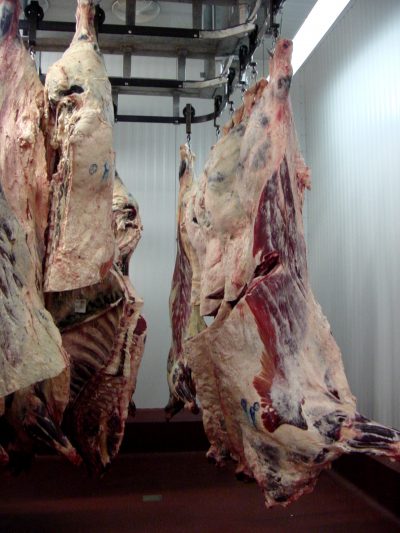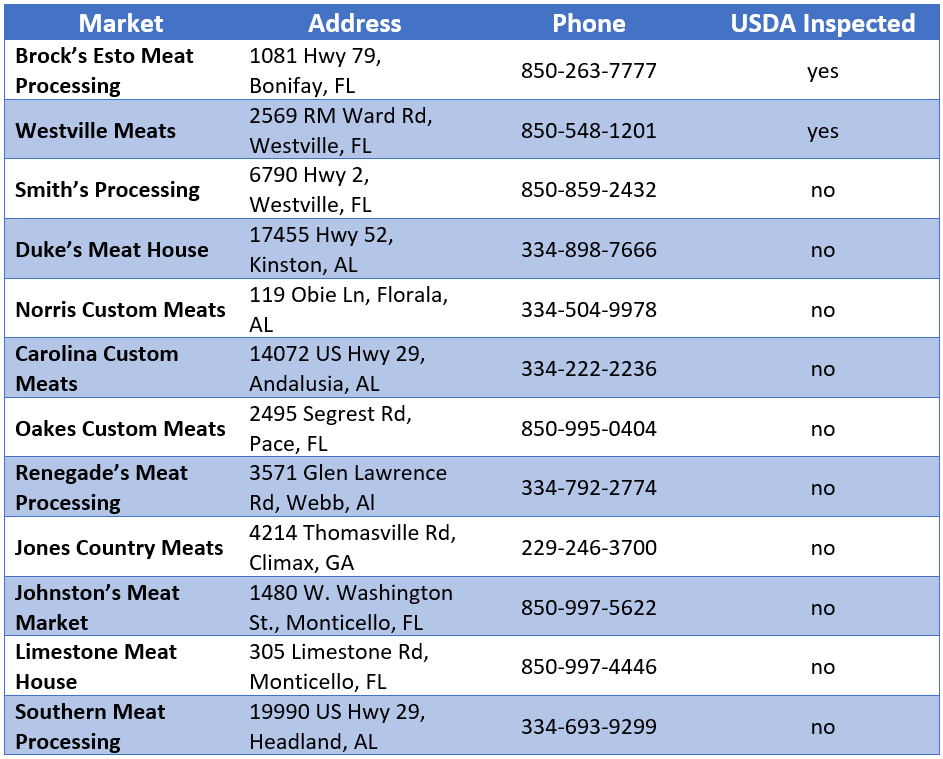Some benefits/advantages of buying freezer beef are you can often see the live animal you are purchasing, how it was raised, and what it was fed. Also, you can choose how long you want the carcass aged, what cuts of meat you want, and how many pounds of meat per package to fit your family’s needs. It is important to understand your options and to decide how you would like the animal processed. Also, if splitting a beef with friends, make sure you know how you want the product divided before taking the animal to the local processor. To utilize all the meat, you will always have a considerable amount of ground meat and stew meat.
Freezer beef is often considered beef that is bought in bulk as whole, half, or quarter of the animal. If the animal (carcass) has been USDA inspected, smaller quantities can also be bought from the producer or processing facility. Remember it takes one cubic foot of freezer space to store 40 lbs. of meat. Frozen beef will typically last 12 months in the freezer, if temps are maintained around zero degrees Fahrenheit. Ground beef, however, should be used within 3-4 months.
If you buy a live beef, it should dress out anywhere from 58-64% of live weight depending on breed, age, and rations it received during its lifespan. Also, you can expect an extra 3-5% shrink from evaporation during the cooling and aging process before the carcass is cut up. Grass-fed beef will dress out 5% less than grain-fed beef. In our area, beef producers raising freezer beef often do both, partially grass fed and grain fed.
According to a report produced by the Utah State Extension Service, beef production was reduced by 30% after Covid-19 caused shut-downs. This could still be a factor with the Delta variant now spreading rapidly and affecting the workforce at processing plants. These disease outbreaks and the demand for locally grown beef will increase the need for expanding and building new, small beef processing plants in our area.
According to research done by Utah State, consumers in that state purchased 53% of their beef from the grocery store, 8% from farmer’s markets, 24% directly from farmers, and 15% from butcher shops. Here in Florida, I would say that a higher percentage is purchased from the grocery store and less from farmer’s markets. Also, another tidbit, beef producers sold fed cattle for $1009.00 per head to large beef packers versus $1495.00 per head selling directly to local consumers, who then had it processed at a local small processing plant.
A sample budget analysis concluded that a 675 head per year processing plant would cost 1.4 million to build, returning 8% on investment with an average price of beef sold for 6.50/lb. To read the entire report, clink on the link at the bottom of this article.
–
Here is a current list of meat processors who butcher beef in the area:
Remember to call and check prices. Only a couple are USDA inspected. Some will hang the meat longer before cutting and wrapping. Also check reviews on Facebook and other websites, or talk to others who have had beef butchered at one of these processors.
–
Additional info and references:
Potential for Growth in Local Processing and Sales of Utah Beef
What To Expect When Buying A Freezer Beef
Beginner’s Guide To Freezer Beef Processing
- What are the Benefits of Freezer Beef? - August 27, 2021
- Fire Management in a Silvopasture System - March 19, 2021
- Game Cameras for Wildlife Monitoring - October 2, 2020


